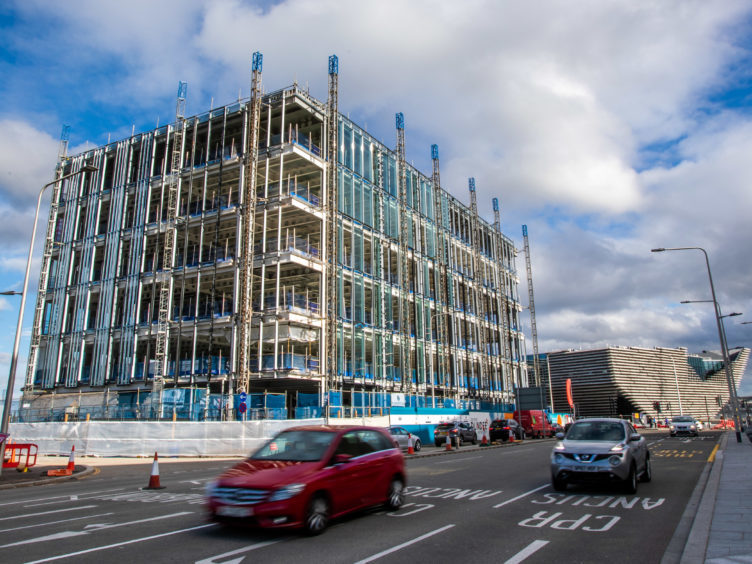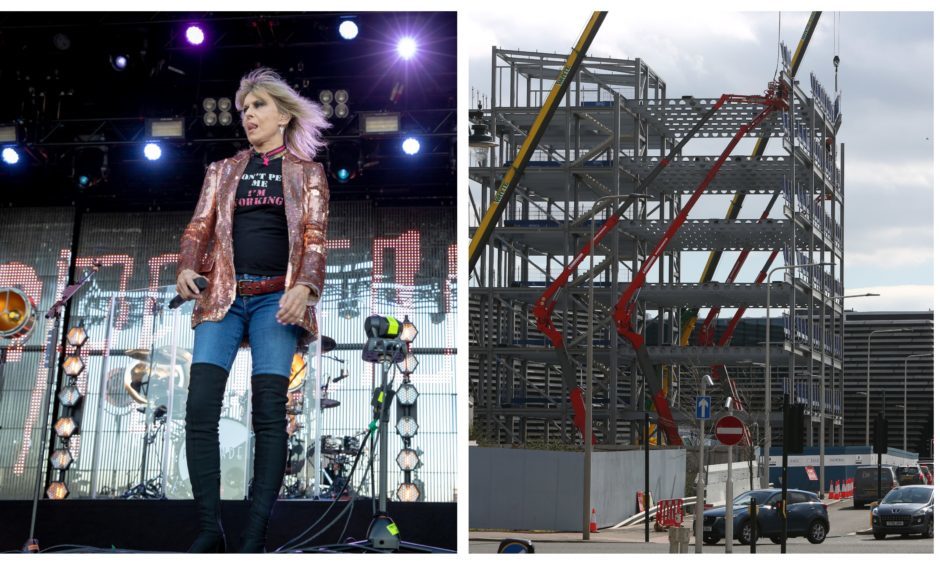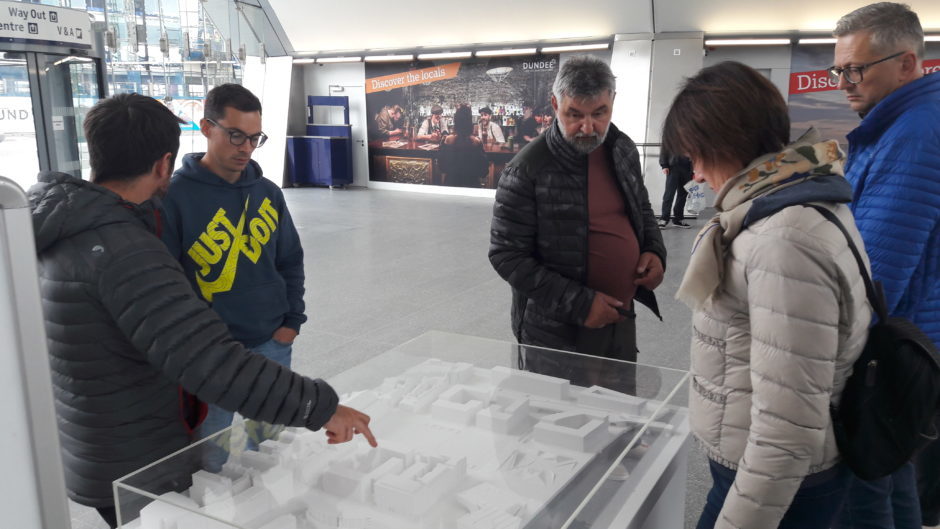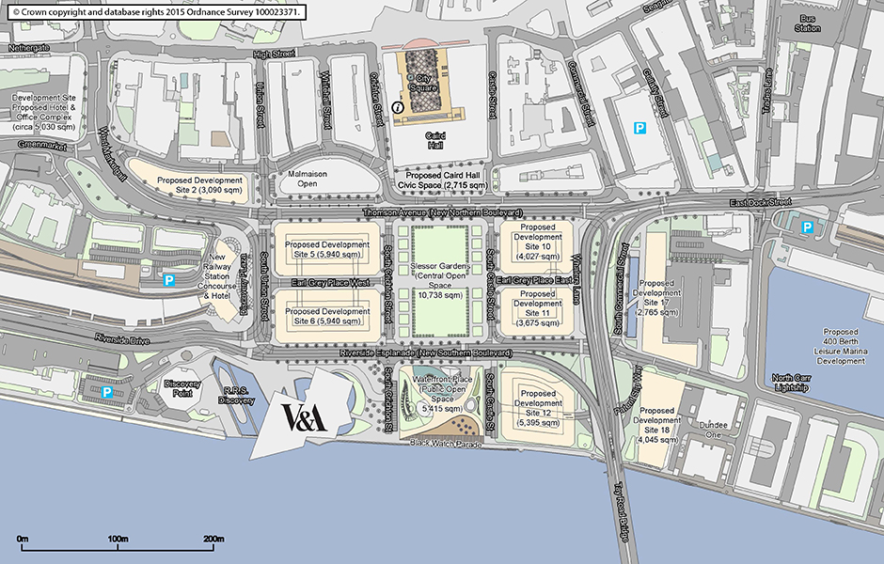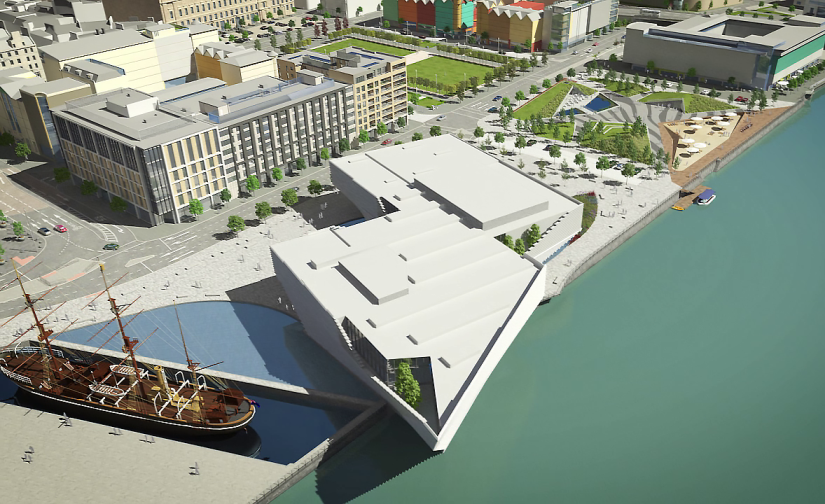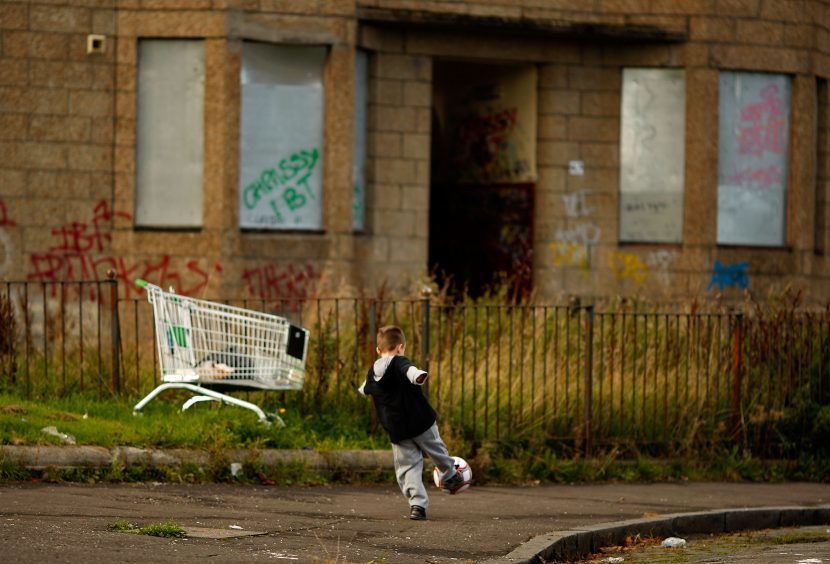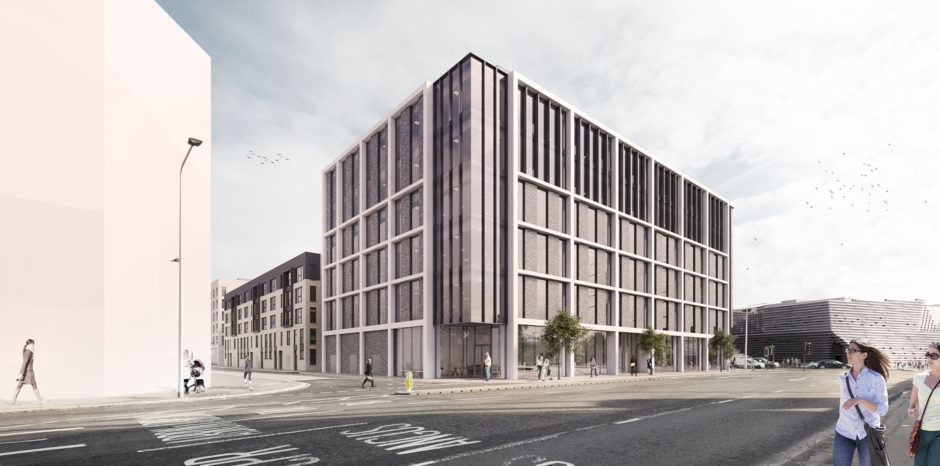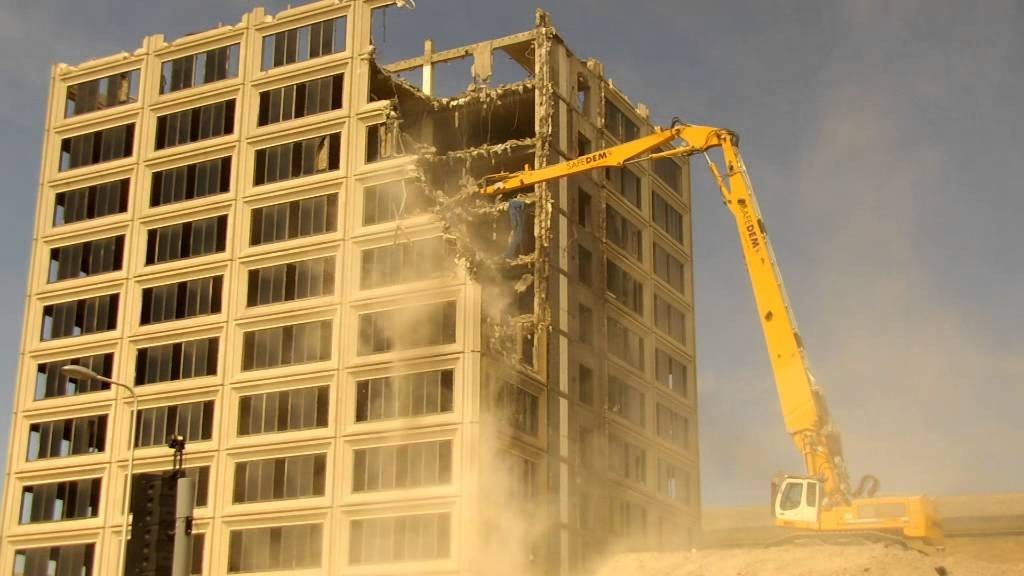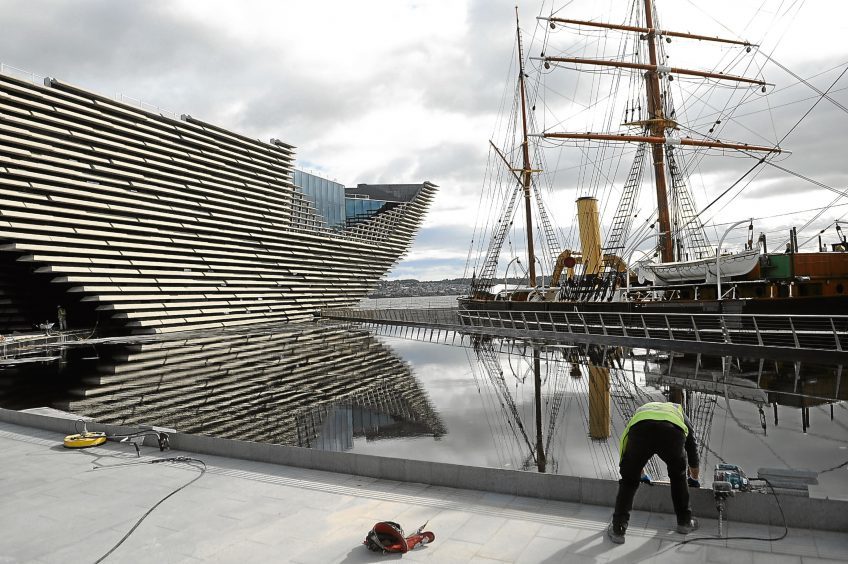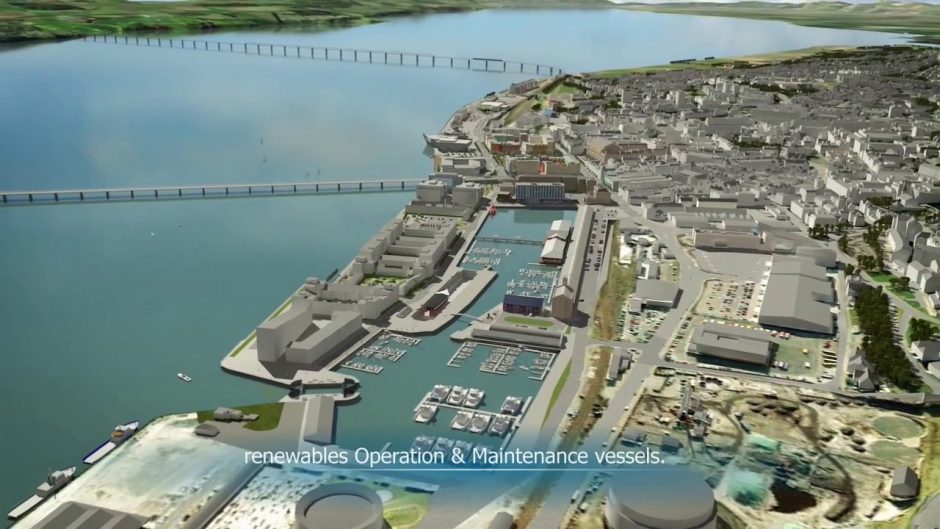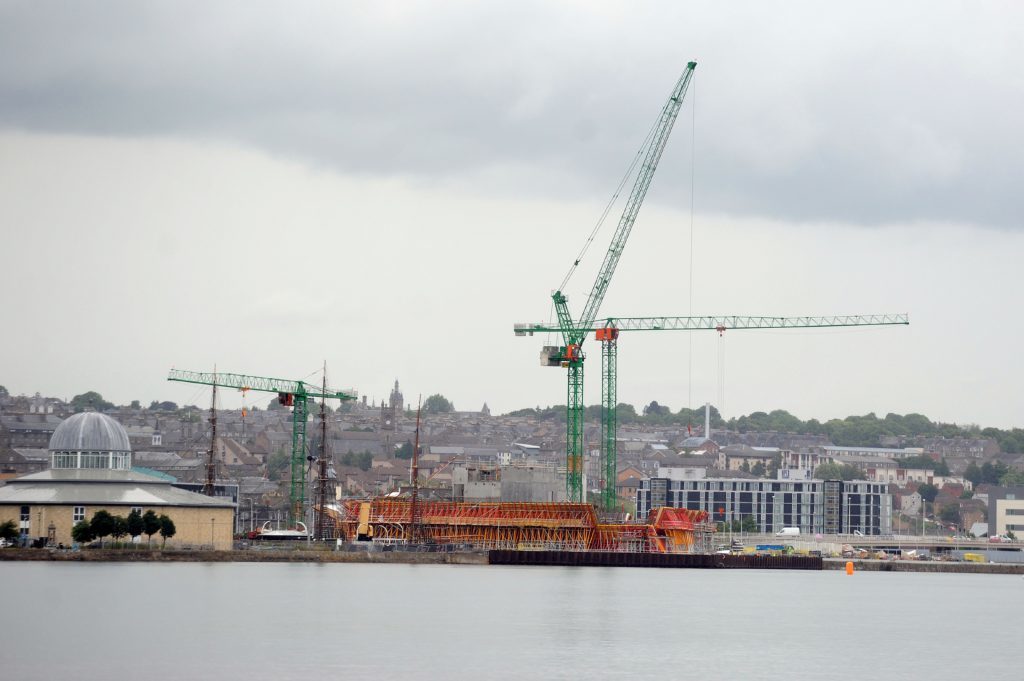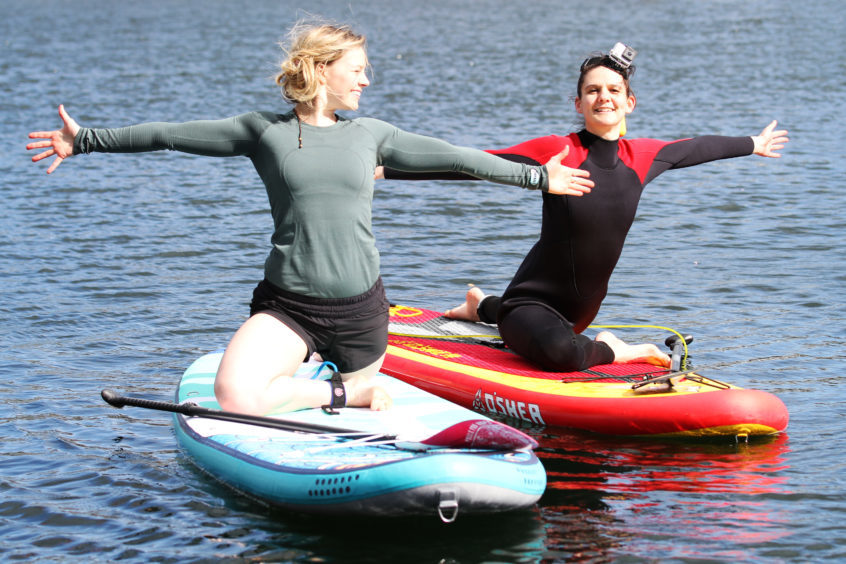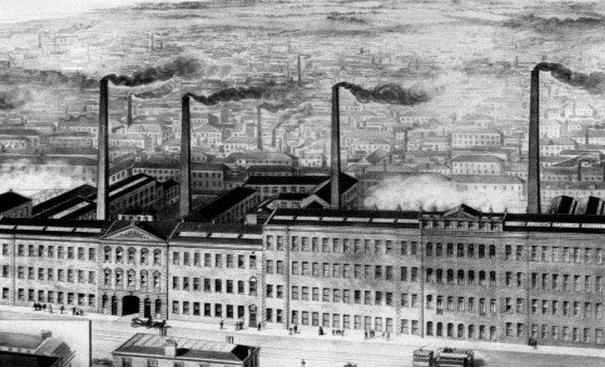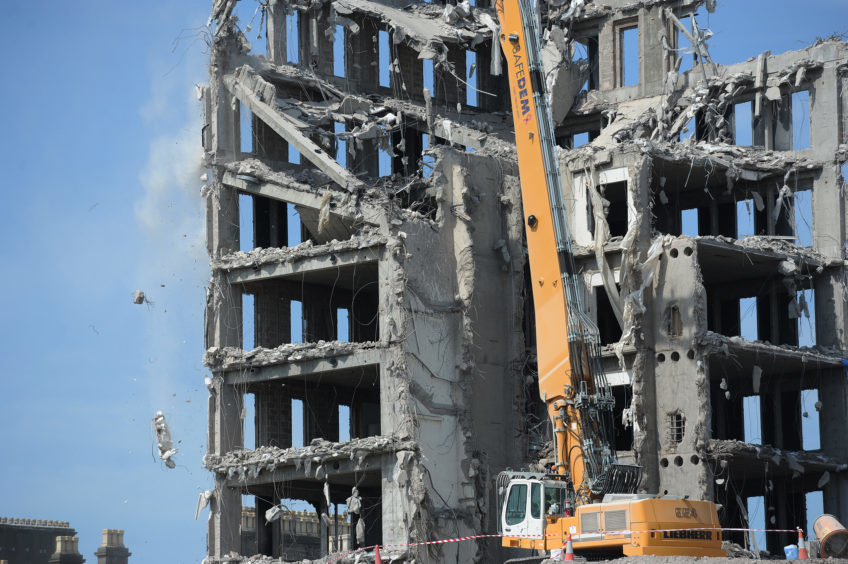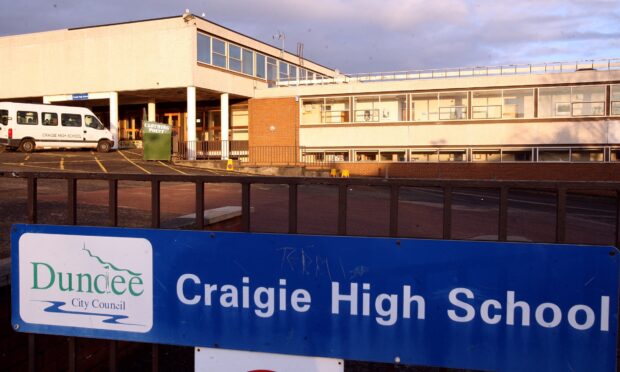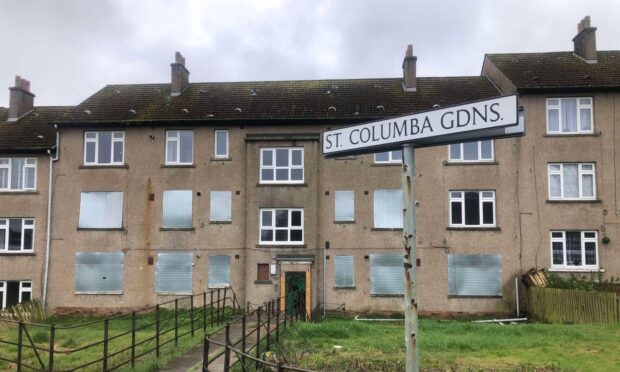In the first of a two-part look at ongoing work to develop Dundee Waterfront, Michael Alexander takes an overview of the plans in the wake of recent criticism by some of the ‘Site Six’ development underway opposite the V&A.
It is the jewel in the crown of Dundee’s £1 billion waterfront development which aims to reconnect the city with the river that was so integral to its past.
Yet amid the fanfare for the opening of the £80 million V&A, which has rightly earned plaudits from near and far, not everyone has shown such warmth towards the ‘Site Six’ building under construction over the road.
While Dundonians have been voicing opinions for months about the scale of the six-storey development earmarked for residential, hotel and office space, high profile headlines were generated the other week when Chrissie Hynde, lead singer of The Pretenders, stood on stage in nearby Slessor Gardens and told locals to “tear down” the structure she claimed distracted her from her performance.
Dundee United supporting TV star Lorraine Kelly and Dundee-raised Hollywood actor Brian Cox also spoke out against it in interviews, while the BBC’s arts correspondent Will Gompertz said of the waterfront in general: “The new railway station-hotel combo is ghastly. As is the crass looking rectangular block being built to its side. There are, I am told, plans for more of the same in a £1 billion regeneration of Dundee’s Waterfront. Oh dear. What a shame. What a missed opportunity. Was there not a design tsar in place to oversee the city’s regeneration masterplan? If not, why not? If there is one, what is he or she thinking?”
If anyone needs a reminder of the grand vision for Dundee’s central waterfront – which has included the development of Site Six from the beginning – then they could do worse than have a look at the scale model currently on display within the upper concourse of Dundee railway station. The Dundee Waterfront website also contains a wealth of information.
While occupancy details and potential scale of the other buildings is currently vague, it shows how the longer term plan is for residential, business and leisure development on both the west and east sides of Slessor Gardens – controversially up to six or seven storeys in height – while the former V&A construction management site will be landscaped to create Waterfront Gardens.
The central waterfront is, of course, just one of five waterfront development zones stretching from Invergowrie Bay to Broughty Ferry – the others being Riverside, Seabraes, City Quay and Port of Dundee.
In addition to the V&A, railway station and Site Six, other work underway or completed includes Black Watch Parade (shared footpath/cycle path running along the shore), Water’s Edge (attracting commercial development to the City Quay area), Riverside Apartments (under construction near Riverside Tesco) and themed artworks at Slessor Gardens.
Few can argue that the eradication of the unsightly Tayside House, old Olympia leisure centre and hideous Stakis Earl Grey hotel from the waterfront landscape has been a great thing.
To replace it with the highly ambitious waterfront development – later to include the V&A – as an economic driver for the city in a bid to tackle to post-industrial malaise deserves the highest of praise.
Yet despite the proposals being in the public domain for many years, that hasn’t stopped some residents from setting up petitions to have Site Six overturned or for local MSP Jenny Marra to castigate what she sees as the over-sized development of the prime site.
Dundee City Council leader John Alexander, who is also chairman of the Dundee Waterfront management board, is aware of recent differences in opinion about Site Six.
However, he said all planning processes and public consultation opportunities have been adhered to – and told The Courier it’s important people do not lose sight of the bigger picture.
“The Waterfront Project was originally designed and set out following public consultation when I was still in primary school – we are now 20 years into that plan,” he said.
“Of course, the V&A was never part of that original plan, although the site on which it sits was always marked out for development.
“In many ways, I think it shows how opinions have changed over the years and how much people have now bought into the V&A – opinions were not always so strongly in favour. The fact that people want to look at it from every angle should be seen as a positive.
“However, the reality is that the waterfront has always been an economic intervention to address Dundee’s underlying problems; be they unemployment, lower business startup rates or lower levels of economic growth.
“If we were to leave this site, any site or the whole waterfront open then it wouldn’t assist in addressing those issues.
“We have created Slessor Gardens and are soon to start on the new playpark and Waterfront Place next to the V&A itself as additional open spaces for the public to enjoy. But grass and open space doesn’t create jobs, investment or opportunities for young people.
“Site Six, love it or hate it, will deliver on all of those fronts. It is but a shell at the moment and much like the construction of the railway station and V&A Dundee, the finished article will look significantly different from how it looks today.
“It was placed in the public domain and there were opportunities, not only to submit views but also to address councillors directly at the planning committee.
“It cannot be torn down, there are legal contracts in place and the development received unanimous permission from every politician on Dundee City Council.
“To abandon the project would be a legal quagmire and extremely costly in terms of costs incurred and in jobs not being realised within the next couple of years.”
Meanwhile, some critics of Site Six have suggested there are empty office blocks in the city centre that should have been utilised first before any speculative new-builds are constructed at the waterfront.
However, Councillor John Alexander has defended the approach taken as Dundee looks to the future.
He said: “Site six is a multi-purpose development which will house retail, hospitality & hotel, residential and office spaces. It is not purely an office block development.
“I have been working closely with businesses and office premises over the last year, which people keep referring to as ‘empty’ and I can categorically state that there is significant interest in the city centre sites. Indeed, two recent announcements from an US tech firm and a Chinese decommissioning firm, will result in premises being taken up at these premises. I’m also aware of a number of further announcements but it isn’t my place to make these at this time.”
Asked if the public could expect buildings on a similar scale to Site Six on other central waterfront sites in the years ahead, the council leader added: “All of the sites in the waterfront will be mixed use and it’s important that we don’t take a one-size-fits-all of all eggs in one basket approach.
“Throughout the waterfront, there will be residential, entertainment and hospitality, retail, office and business start-up opportunities.”
Councillor Alexander’s advice is for people to engage with the waterfront website or app, watch the fly through and keep an eye on applications coming forward.
Whilst some conversations are “further advanced on some sites”, the proposals can be engaged by the public, with planning applications publicly available and able to be commented on.
“All of the sites marked by hoarding are development sites although they will be different in scale and size,” he added.
“Over the next year, I would expect that further applications and interest will come forward for these mixed use sites and this may be accelerated by the V&A effect.”
TIMELINE
The £1 billion transformation of Dundee Waterfront, which encompassed 240 hectares of development land stretching 8km alongside the River Tay, is a strategic, focussed and forward looking project (2001 – 20130) that aims to propel the city to international acclaim.
The area is divided into five focussed zones: Riverside, Seabraes, The Central Waterfront, City Quay and Dundee Port.
The vision for the waterfront is: “To transform the City of Dundee into a world leading waterfront destination for visitors and businesses through the enhancement of its physical, economic and cultural assets.”
1998 – Draft masterplan prepared; Major study undertaken on the future potential of Dundee’s Waterfront.
2000 – Major consultation takes place on the future of the Waterfront; Dundee Science Centre opens at Seabraes.
2001 – Dundee Central Waterfront Masterplan published.
2003 – Infrastructure works commence, funded by the Cities Growth Fund.
2006 – Work commences on strengthening the railway tunnel; Western Road Realignment works completed in March.
2007 – Railway tunnel strengthening works completed.
2009 – V&A Dundee announced as key part of the new Waterfront development. An international design competition is launched to appoint an architect; Tay Road Bridge ramps are realigned to facilitate the new road arrangements; The Clocktower residential development is completed.
2010 – Japanese architects Kengo Kuma & Associates announced as architects for the new V&A Dundee; Construction of a large stormwater drainage tank is completed in the central Waterfront; The Dundee One office development is completed.
2011 – The Scottish Government National Renewables Infrastructure Plan identified Dundee Port as one of the key sites for support of offshore wind power developments; The historic Telford Beacon is relocated within the central waterfront.
2012 – Tayside House demolished to make way for roads and central open space; The Stannergate Bridge is renewed to afford better access to the Port of Dundee; The Quayside Mews residential development is completed.
2013 – The first building at District 10 with a design based on a recycled shipping containers opens; Dundee’s new Olympia swimming and leisure centre is constructed. Demolition commences on the former building in the central waterfront.
2014 – Work starts on the creation of the central open space; Malmaison Hotel opens.
2015 – Design and planning guidance is published to aid developers; An interactive app showing the proposed developments becomes available; Work starts on construction of V&A Dundee; Work starts on the construction of a new rail station.
2016 – Construction starts on new Premier Inn; A drainage pond at South Commercial Street is constructed; Slessor Gardens is opened by the Queen; Discovery Walk opens at Slessor Gardens;
2017 – First major concert (UB40) held at Slessor Gardens followed by Olly Murs and Little Mix; Planning application approved for development of Site Two; New wakeboarding centre opens at City Quay; Planning application approved for development of Site Six.
2018 – New rail station and Sleeperz Hotel opens; Planning application for Waterfront Place approved; Construction at Site Six commences; Construction of Black Watch Parade commences; new Aqua Park obstacle course opens at City Quay; V&A Dundee opens on September 15.
HISTORY
Dundee’s history is closely interlinked with its location on the north shore of the Firth of Tay.
The city gained its charter in 1191 as one of King David 1’s new towns created to encourage trade and civilise the Scottish countryside.
The site was strategically positioned, controlling the entry into the heart of Scotland.
During the medieval period, however, Dundee was second only to Edinburgh in terms of commercial prosperity.
Most early trade was by sea and Dundee was ideally located on shipping routes to and from the Baltic and North European ports due to being closer than Edinburgh by two days sailing.
The earliest harbour is thought to have been at Gellatly Street/Seagate junction, the port had moved westwards by the 16th Century to a point close to the current High Street at Whitehall Crescent.
From here the harbour developed during the 17th and 18th Centuries.
By the 1830s when flax gave way to jute, Dundee changed from a trading port to the world centre for the jute processing industry and the city rapidly expanded.
Thomas Telford was appointed to improve the harbour facilities and built the King William IV Dock and the West Graving Dock, on the site of the old tidal harbour, plus a new tidal harbour to the south.
The development of the dock continued for the next 100 years, with Earl Grey Dock formed and Victoria and Camperdown Docks added to the east moving the city further away from the waterfront.
The railways followed soon after and by the end of the 19th Century, the first signs of decline were apparent and the docks were no longer heavily used.
In 1911, the City Architect, James Thompson prepared designs for a new Civic Centre on the site of the Waterfront, but the commencement of the World Wars meant that these proposals were never implemented.
In the 20th Century, the most significant factor which determined Dundee’s relationship with the Waterfront was the siting on the northern landfall of the Tay Road Bridge.
Olympia Leisure Centre and Tayside House were then built in the 1970s – the resultant effect was the loss of the harbour and the severance of the waterfront from the city.
The redevelopment of Dundee’s waterfront is building on a succession of developments dating back as far as 1300 which have sought to make use of the waterfront.
In doing so the current development is writing a new chapter in the history of Dundee.
- In Tuesday’s Courier, Michael Alexander looks more closely at the other Waterfront development sites earmarked for development – including ‘Site Two’ where work is due to start next year.
